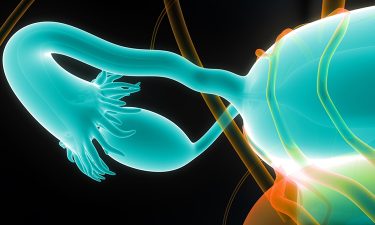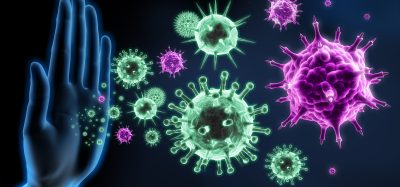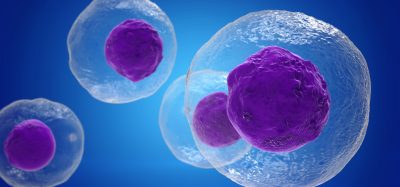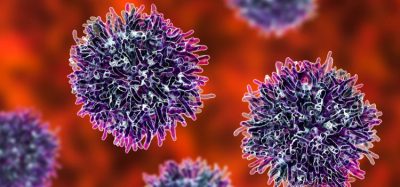Ovarian cancer breakthrough: the potential of rhenium tricarbonyl (TRIP) as a promising anti-tumour drug
Posted: 8 February 2023 | Izzy Wood (Drug Target Review) | No comments yet
In this exclusive article, Drug Target Review’s Izzy Wood highlights ground-breaking ovarian cancer research, after speaking with Dr Benjamin Neuditschko, from the Institute Krems Bioanalytics at IMC Krems.


According to the World Cancer Research Fund International, ovarian cancer is the eighth most common cancer in women worldwide. Usual treatment includes surgery, radiotherapy, chemotherapy,1 anti-angiogenics, PARP inhibitors2 and hormone therapy.1
Despite their varied success in treating ovarian cancer, many research groups are still working to discover more effective treatments, with fewer or no side effects, than those currently available.
A new study, published in Angewandte Chemie International Edition, describes how scientists at the Institute Krems Bioanalytics at IMC Krems, Austria, used an innovative research method: chemoproteomics, to identify target proteins for the potential anti-tumour drug rhenium tricarbonyl (TRIP) in ovarian cancer cells.
AI-powered drug discovery: Accelerating the development of life-saving therapies
18 September 2025 | 14:00PM BST | FREE Webinar
Join this webinar to learn how AI is accelerating early-stage drug discovery and improving target identification, practical strategies for applying AI effectively within your organisation and to ask your questions to our industry expert! Dr Remco Jan Geukes Foppen will share practical insights into how AI is being applied across the pharmaceutical sector, helping teams move faster and make better-informed decisions. With experience spanning data management, image analysis, bioinformatics, and machine learning in clinical research, he brings both deep technical expertise and strategic understanding of real-world challenges.
Register Now – It’s Free!
I spoke with Dr Benjamin Neuditschko, a lead scientist of the study, who explained more about the promising research.
Using chemoproteomics to identify new targets
Identifying target proteins is an important starting point in drug development to gauge the efficacy of an active agent in cancer cells. By monitoring their effect on multiple proteins, potential side effects can be minimised.
To identify a promising target protein candidate in ovarian cancer cells, the team therefore designed the study based on chemoproteomics — a key technology for characterising the mode of action of drugs to determine which cellular proteins the drug affects. This helped clarify which proteins interact with the recently discovered anti-tumour agent TRIP and how TRIP affects the composition of the proteome.


“For our study, we considered a new combined research approach; firstly performing chemoproteomic studies on cancer cell lysates with different TRIP doses, and secondly looking at the effects of TRIP treatment on living ovarian cancer cells,” explained Neuditschko.
“The novel approach of combining dose-dependent chemoproteomics and target-response profiling allowed us to narrow down a high number of identified proteins to just a few probable targets,” Neuditschko continued.
“In this way, we were able to identify a total of 89 target proteins in a dose-dependent manner and also find out on which of these proteins TRIP acts most efficiently,” he said. “This would not have been possible by either method alone, enabling us to develop a targeted assay to confirm NUBP2 as a target for TRIP”.
The potential of NUBP2
In the study, the researchers identified 89 proteins using chemoproteomics, yet it was the scaffold protein, NUBP2, that could be identified as a promising target for the anti-tumour drug because it interacts with the drug even at very low and non-cytotoxic TRIP doses.
NUBP2 is involved in metabolic processes in cancer cells that are important for their survival: if this protein is competitively inhibited by TRIP, this ultimately leads to cell death (apoptosis) of the tumour cells.
Neuditschko also highlighted that the insights gained from this pre-clinical study are of interest for further research as TRIP, via inhibition of NUBP2, interferes with the biogenesis of Fe-S clusters in tumour cells even at very low and therefore not generally cytotoxic doses, representing a promising candidate in the search for anti-cancer drugs with high specificity and few side effects.
“More specifically,” Neuditschko elaborated, “NUBP2 is a biogenesis factor that is essential for the production of proteins with iron-sulphur clusters, which play a role as co-factors in many essential cellular metabolic processes. Treatment of ovarian cancer cells with nanomolar (very low) concentrations of TRIP, leads to a drastic reduction in Fe-S proteins, preventing processes essential for survival, such as cellular respiration, from taking place thus causing tumour cell death.”
Challenges in discovering NUBP2
Neuditschko highlighted that the biggest challenge with these experiments was related to data interpretation. “We had 89 dose-dependent targets and over 750 significantly regulated proteins from cell treatment,” he explained. “The main challenge was to filter out which of the targets are most probably direct interactors and to rule out unspecific interactions as much as possible.”
Further research will be conducted for TRIP, as a drug that is more efficient and more side-effect-free than those currently available.


Dr Benjamin Neuditschko holds a bachelor’s degree in Chemistry and a master’s degree in Biological Chemistry from the University of Vienna. He first heard about Mass Spectrometry while writing his master thesis at the Institute of Analytical Chemistry. In his doctoral thesis, in the Bioanalytics working group, he investigated the molecular effects of metal-based cancer therapeutics in cell culture systems. After receiving his PhD, he started as a postdoc at IMC University of Applied Sciences Krems’ Institute Krems Bioanalytics.
References:
1.NHS choices. NHS; [cited 2023Feb6]. Available from: https://www.nhs.uk/conditions/ovarian-cancer/treatment/
2. Targeted therapies ovarian cancer [Internet]. Ovarian Cancer Action. [cited 2023Feb6]. Available from: https://ovarian.org.uk/ovarian-cancer/patient-hub/treatment/targeted-therapies-and-ovarian-cancer/
Related topics
Drug Development, Drug Discovery, Oncology, Protein, Proteomics, Targets, Therapeutics
Related conditions
Ovarian cancer
Related organisations
Institute Krems Bioanalytics at IMC Krems, World Cancer Research Fund International
Related people
Dr Benjamin Neuditschko








